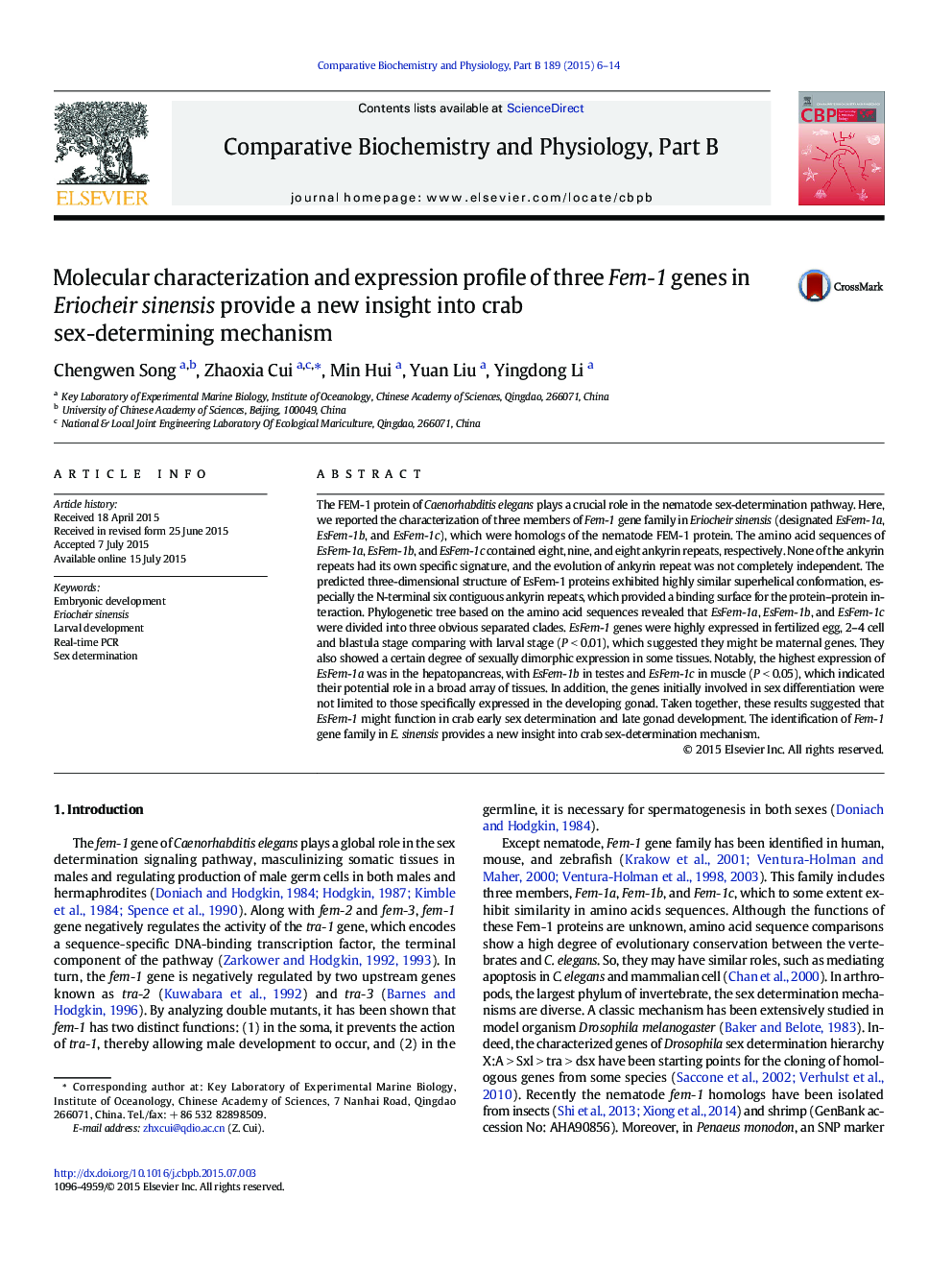| کد مقاله | کد نشریه | سال انتشار | مقاله انگلیسی | نسخه تمام متن |
|---|---|---|---|---|
| 1975138 | 1539143 | 2015 | 9 صفحه PDF | دانلود رایگان |

The FEM-1 protein of Caenorhabditis elegans plays a crucial role in the nematode sex-determination pathway. Here, we reported the characterization of three members of Fem-1 gene family in Eriocheir sinensis (designated EsFem-1a, EsFem-1b, and EsFem-1c), which were homologs of the nematode FEM-1 protein. The amino acid sequences of EsFem-1a, EsFem-1b, and EsFem-1c contained eight, nine, and eight ankyrin repeats, respectively. None of the ankyrin repeats had its own specific signature, and the evolution of ankyrin repeat was not completely independent. The predicted three-dimensional structure of EsFem-1 proteins exhibited highly similar superhelical conformation, especially the N-terminal six contiguous ankyrin repeats, which provided a binding surface for the protein–protein interaction. Phylogenetic tree based on the amino acid sequences revealed that EsFem-1a, EsFem-1b, and EsFem-1c were divided into three obvious separated clades. EsFem-1 genes were highly expressed in fertilized egg, 2–4 cell and blastula stage comparing with larval stage (P < 0.01), which suggested they might be maternal genes. They also showed a certain degree of sexually dimorphic expression in some tissues. Notably, the highest expression of EsFem-1a was in the hepatopancreas, with EsFem-1b in testes and EsFem-1c in muscle (P < 0.05), which indicated their potential role in a broad array of tissues. In addition, the genes initially involved in sex differentiation were not limited to those specifically expressed in the developing gonad. Taken together, these results suggested that EsFem-1 might function in crab early sex determination and late gonad development. The identification of Fem-1 gene family in E. sinensis provides a new insight into crab sex-determination mechanism.
Journal: Comparative Biochemistry and Physiology Part B: Biochemistry and Molecular Biology - Volume 189, November 2015, Pages 6–14